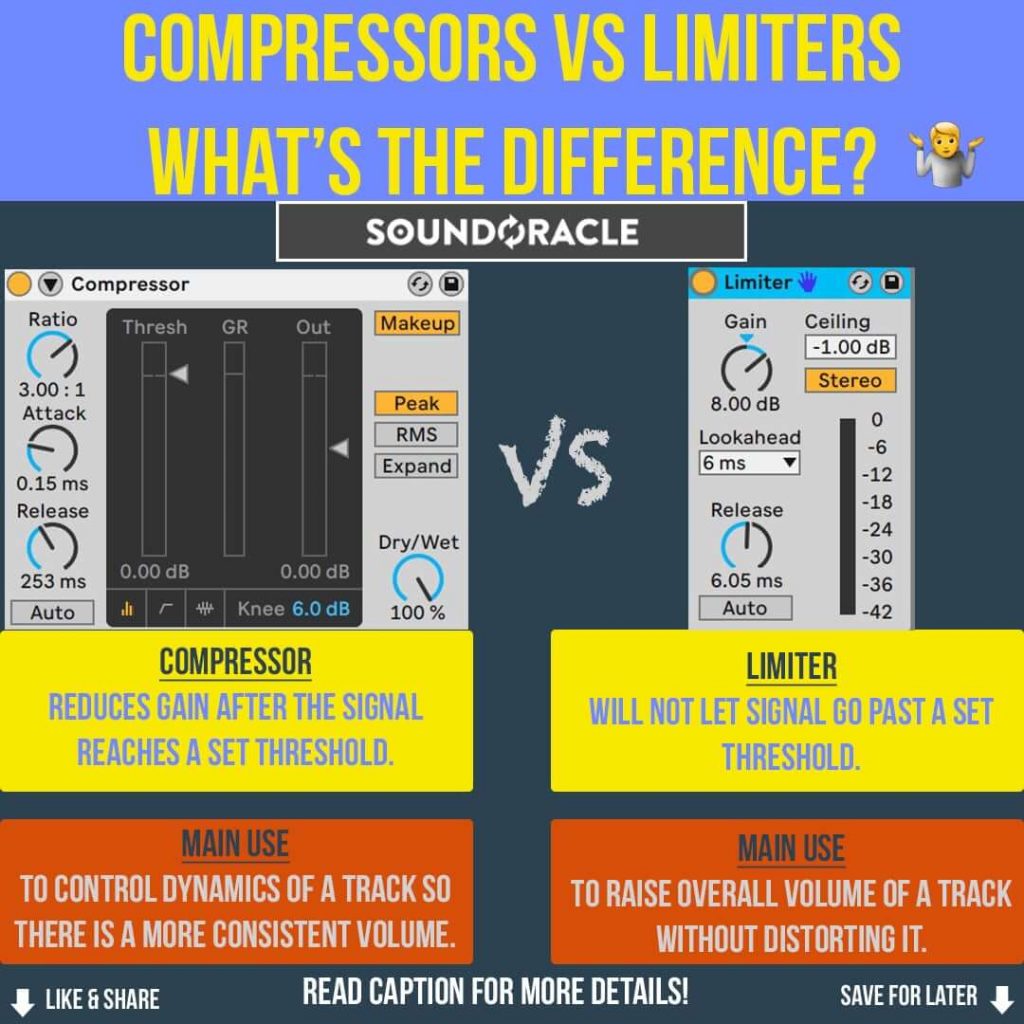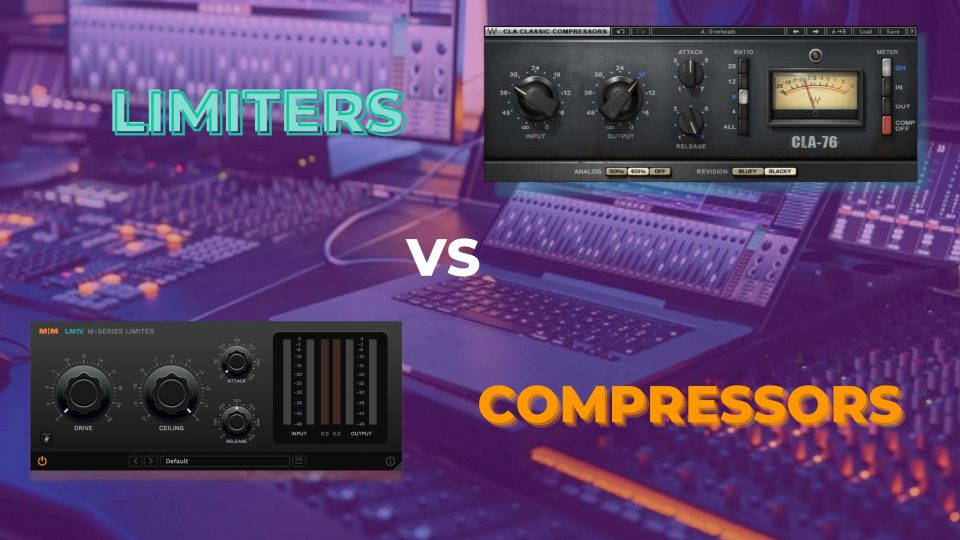What is the Difference Between a Compressor and a Limiter?
Is a limiter a compressor? Well, the short answer is yes. But a limiter has a much more specific purpose compared to your typical compressor.
There are different types of compressors and a limiter is one. But a limiters purpose is slightly different to its counterparts. We use a compressor to control the dynamic range of a signal.
Dynamic range is the difference between the highest and lowest levels of amplitude in a signal. We use a compressor to reduce the dynamic range by lowering the highest points while maintaining the lowest points for a consistent level across the whole signal.
We use a limiter, on the other hand, to put a ceiling on the top of the signal that it cannot breach. We would want to use a limiter to lower the loudest moments of a signal to avoid unwanted distortion while maintaining the integrity of the signal tonal balance.
Compressor vs Limiters
The biggest difference that we should point out is the role of the threshold parameter. On your compressor, the threshold control is where we determine the level at which the signal should start having its gain reduced. By setting the threshold, you’re setting a maximum level that your signal can reach before the compressor begins lowering the level.
Setting the threshold on your compressor sets the maximum level that your can will reach before your compressor begins lowering the level.
The threshold control on your limiter, however, won’t let the signal get any louder than the threshold that you have set. With a limiter on your channel strip, you can raise the signal gain and your signal will not reach levels at which they’d usually distort. For example, you can set your limiter to any variable (such as -1.00dB), then the limiter simply won’t allow the signal to go past -1.00dB.
Setting the threshold on your limiter sets the maximum level your signal can reach, and your limiter won’t let the signal get any louder.
But be cautious with your limiter as the more you pump into it can squash your signal to very undesirable levels.

But the threshold isn’t the only difference when it comes to compressors and limiters. We must also discuss the ratio.
The ratio on a compressor dictates the attenuation amount that only some of the signal will receive. A limiter has a ratio control that attenuates all of the volumes that breaches the threshold.
For more information on how compressors do what they do click here.
When to Use a Limiter Instead of a Compressor, and Vice Versa
Now that we’ve explored just what the difference between the two are, shall we talk about when they come in to use?
We want to use a compressor when we’re trying to control the dynamics of a signal. That means when want to attenuate the difference between the loudest and quietest points of a signal. A compressor is not as powerful as a limiter so it doesn’t just squash the signal.
But we can also use compressors to glue multiple tracks together. For example, if you run your kick, snare & hats into the same compressor bus, they’ll sound like they’re working together more closely. Compressors are also great tools for taming crazy transient information!
A limiter is a compressor on steroids. Limiters are amazing tools to use on a bus channel as well as a master channel if you want to raise the gain of the track without distorting it. WE wouldn’t want to use a compressor for this as makeup gain on a compressor may clip & distort your signal.
As we mentioned above, limiters are also great tools for setting a “ceiling” that the gain of your signal cannot breach.

Are you ready to practise your newfound knowledge? Great! We love the determination in you. But we know that you need some sound to compress and limit.
The sampling revolution has risen in popularity and shaped music since the early 1970s. Sample culture continues to transform how millions of artists and producers do their thing in DAWs.
You too can break conventional norms, challenge the status quo, and open Pandora’s box of sound design.
Mixxed works with a growing number of sample labels and contributors to provide you with a premium sample subscription service that’s more accessible than any before.
You’ll have access to our growing catalogue of loops, one-shots and sound effects that you can browse, download and keep forever for less than $3 a month.
Sign up today to find your sound!
